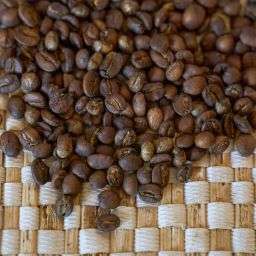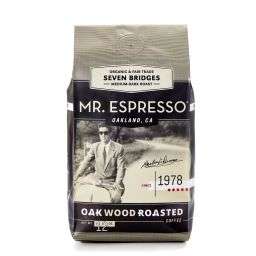
Grinding coffee beans immediately before brewing preserves the beans’ inherent flavors and aromas, resulting in a fresher and more vibrant cup of coffee. This freshness directly impacts the coffee’s taste profile, enhancing its overall quality and enjoyment.
Overview of Methods for Grinding Coffee
Various methods exist for grinding coffee, from manual hand grinders to electric burr and blade grinders. Each method offers different levels of control over the grind size, affecting the coffee’s extraction process and final taste.
Using a blender to grind coffee beans is a practical solution for those without access to a coffee grinder. Blenders are versatile kitchen tools available in most households, making them a convenient option for grinding beans.
While blenders may not provide the same level of grind consistency as specialized coffee grinders, they can still produce an adequate grind for many brewing methods. The key is understanding how to use the blender effectively to achieve the desired grind size.
Preparing to Grind Coffee Beans in a Blender
To grind coffee beans in a blender, you’ll need a clean blender, fresh coffee beans, and a measuring tool. Ensure the blender’s jar and blades are thoroughly clean to avoid any cross-contamination of flavors.
Start with a small amount, typically about ¼ cup, to ensure the beans grind evenly. This quantity allows the blades to move freely and prevents overheating, which can affect the coffee’s flavor.
Step-by-Step Guide to Grinding Coffee Beans in a Blender
Grinding coffee beans in a blender can be an effective alternative to using a traditional coffee grinder. By following a precise method, you can achieve a satisfactory grind that will contribute to a flavorful cup of coffee. This guide outlines a step-by-step approach to grinding coffee beans using a blender.
- Begin by measuring the coffee beans. For most brewing methods, a good starting point is to use a ratio of 1:15 of coffee to water. This means for every 1 gram of coffee, use 15 grams (or milliliters) of water. Start with about ¼ cup of beans to ensure they grind evenly without straining the blender.
- Place the measured coffee beans into the blender. Ensure the blender is dry and clean to prevent any unwanted flavors from mixing with the coffee. Distribute the beans evenly at the bottom of the blender jar to promote a uniform grind.
- Secure the blender lid and use the pulse feature to grind the beans. Short, quick pulses allow for better control over the grind size and help prevent the beans from overheating, which can affect their flavor. Adjust the pulsing duration depending on whether you desire a coarse or fine grind.
- After several pulses, stop the blender and shake it gently. This action helps redistribute the beans for an even grind. Ensure the lid is securely fastened before shaking to avoid any spills. Repeat the pulsing and shaking process until you achieve the desired consistency.
- Once you’ve reached the desired grind size, carefully empty the ground coffee from the blender. If you need to grind more beans, clean the blender jar to remove any residue that might affect the next batch’s flavor. Repeat the process as necessary.
- With the freshly ground coffee ready, proceed to brew your coffee according to your preferred method. Whether you favor a French press, drip coffee maker, or espresso machine, freshly ground beans will enhance the flavor and aroma of your coffee.
By following these steps, you can effectively grind coffee beans in a blender, ensuring a fresh and flavorful coffee experience. Remember, the key to a great cup of coffee lies not only in the beans but also in the care and precision used during the grinding process.
Avoiding Overheating and Ensuring Even Grind
To prevent overheating, which can compromise the flavor of your coffee, use short pulses when grinding in a blender. This technique also contributes to a more even grind by allowing larger particles to settle closer to the blade between pulses. Overheating can result from continuous operation, so it’s crucial to give your blender short breaks if you’re grinding in multiple batches.
Grind Size and Coffee Types You Can Brew
The grind size significantly affects the extraction process and the final taste of your coffee. A coarse grind is ideal for French press and cold brew, a medium grind suits drip coffee makers, and a fine grind is preferred for espresso. Experimenting with grind sizes can help you find the perfect match for your preferred brewing method.
Additional Considerations
Use a kitchen scale for precise measurement of your coffee beans. This accuracy is essential for achieving the optimal coffee-to-water ratio, which is critical for brewing a perfect cup of coffee.
Grinding coffee beans at home immediately before brewing preserves their freshness, flavor, and aroma. Pre-ground coffee can lose these qualities quickly due to oxidation and exposure to air.
FAQs
Is It OK To Grind Coffee Beans In A Blender?
Yes, it’s perfectly acceptable to grind coffee beans in a blender, especially if you do not have access to a coffee grinder. While a blender may not offer the same precision as a coffee grinder, it can still produce a satisfactory grind for most brewing methods.
Can You Use A Blender Instead Of A Coffee Grinder?
A blender can be used as an alternative to a coffee grinder. While the grind may not be as consistent, with careful pulsing, you can achieve a decent grind for your coffee.
What Is The Best Way To Grind Coffee Beans?
The best way to grind coffee beans is using a method that gives you control over the grind size according to your brewing method. While coffee grinders are ideal, blenders can serve as a good alternative.
Do Coffee Beans Stay Fresh In A Grinder?
Coffee beans begin to lose freshness once ground, regardless of where they are stored. It’s best to grind only the amount you need for immediate use.
Is It Necessary To Have A Coffee Grinder?
While having a coffee grinder is beneficial for achieving the ideal grind size for different brewing methods, it is not strictly necessary. A blender can serve as a suitable alternative for grinding coffee beans.
Conclusion
Grinding coffee beans in a blender can be an effective and convenient alternative to using a traditional coffee grinder. By following the outlined steps and tips, you can achieve a quality grind that brings out the best in your coffee, enhancing its flavor and aroma. Remember, the key to great coffee lies in the freshness of the grind and the precision of the process.









